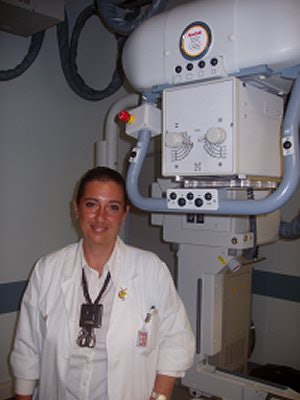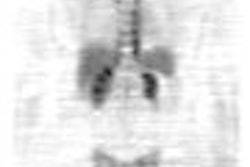
ATHENS - The press corps camped outside KAT Hospital may only be interested in the two accident-prone, drug-test-missing Greek sprinters who have spent several days here. But inside, a new x-ray system is generating plenty of interest for the staff.
In July, KAT (an acronym for the trauma center's name in Greek) became the first hospital in Greece to install a DirectView DR 9000 digital radiography system from Rochester, NY-based Eastman Kodak Health Imaging.
Since then the system has proven immensely popular, generating 295 studies in a single 24-hour period since the games began. Between August 11 and August 16, the DR system has imaged as many as 50 Olympics-associated athletes and officials.
The machine was originally meant for the Polyclinic in the Olympic Village, but when that facility didn't have room, KAT officials volunteered to take the machine. The arrangement required training KAT's radiographers to make the leap from using a conventional x-ray film system to the flat-panel digital detector.
"It's like the people here went from using a regular phone to a cell phone without learning how to use a fax machine in between," said Dimitros Aslanis, business unit manager for Kodak Health Imaging in Greece.
Currently, eight radiographers are trained on the system at KAT, a very busy trauma center. Trauma cases in Athens are rotated among the city's four major hospitals on a daily basis, meaning that all trauma cases are generally sent to a single hospital on a given day.
KAT was the hospital on trauma rotation on Sunday, August 15, when radiographers took 295 exposures. The day's workload included several Olympic athletes. In the afternoon, a crash in the women's cycling road race sent two riders to KAT -- and to the front of the line.
"The athletes get absolute priority," said Walter Streng of Stuttgart, Germany, a radiographer turned Kodak DR product specialist who helped train KAT staff on the 9000, and is overseeing its use in the early days of the games. "There can be 20 patients out there in line, (but) the athletes come in first."
The DR 9000 is housed in a 30-square-meter room that was formerly a storage closet and was supposed to become a doctor's office. A complete renovation began in late June, with lead lining installed on the walls and the railing via which the system is moved from its ceiling attachment.
 |
| Radiographer Demetra Boudouris stands with the new digital radiography system at Athens' KAT trauma center. The DR system was installed especially for the 2004 games, and includes its own Olympic rings medallion at the top. |
Preparing the room and installing the machine in time for testing prior to the games was a major challenge, according to Aslanis. "It was a tremendous race. Everybody was chasing everyone," he said.
The system went online July 18, and has since been used for nearly 2,400 exposures. The image reject rate for the system is about 2.8%; the reject rate in a typical European hospital is 8%, according to Streng.
For now the 9000 is officially on loan through the end of the Olympics. Aslanis said negotiations are under way for the public hospital to purchase the machine at far below its $540,000 list price.
"We are going to give a very generous discount," he said. "One way or the other, it will work out."
That's good news to radiographers like six-year KAT veteran Demetra Boudouris, who is very pleased with the system. "I think it's great," she said.
By Matt King
AuntMinnie.com contributing writer
August 17, 2004
Copyright © 2004 AuntMinnie.com


















